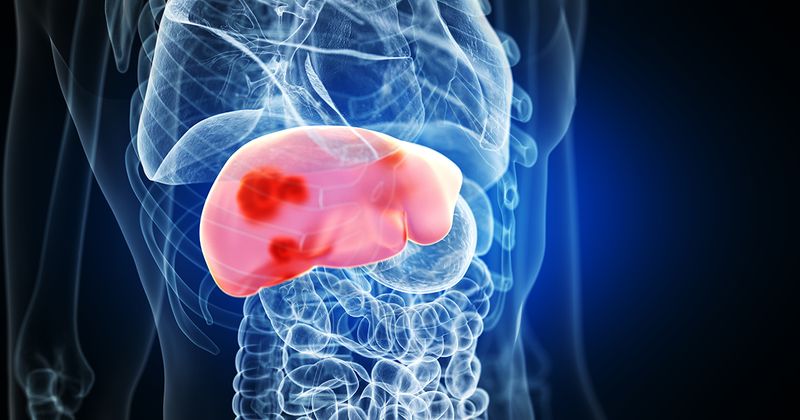Fibrosis-4 may be ‘better screening tool’ for advanced NAFLD fibrosis in lean patients
Key takeaways:
- The diagnostic performance of fibrosis-4 index and NAFLD fibrosis score were similar.
- The sensitivity and specificity of NAFLD fibrosis score increased and decreased, respectively, with increasing BMI.
Although fibrosis-4 index and NAFLD fibrosis score did not significantly differ in diagnosing advanced fibrosis in nonalcoholic fatty liver disease, fibrosis-4 may be a better screening tool in lean patients, according to a study.
“The diagnostic performance of the fibrosis-4 index (FIB-4) and NAFLD fibrosis score (NFS) have been extensively studied in patients with NAFLD,” lead authors Eileen L. Yoon, MD, PhD, and Dae Won Jun, MD, PhD, both of Hanyang University College of Medicine in Seoul, and colleagues wrote in JAMA Network Open. “Although the specificity and positive predictive value of FIB-4 and NFS for advanced hepatic fibrosis are low, these two measures demonstrate high negative predictive values and acceptable sensitivity.”

Image: Adobe Stock
They added: “The AGA Institute’s Clinical Practice Updates Committee and Governing Board recommended the use of serum noninvasive tests (FIB-4 and NFS) as the first step in stratifying liver fibrosis risk in lean patients with NAFLD. However, the diagnostic performance and adequate cutoffs for the FIB-4 and NFS in lean individuals with NAFLD have not been evaluated.”
In a diagnostic study, researchers assessed 1,501 adult patients (mean age, 46.1 years; 52.5% men) with biopsy-proven NAFLD at six referral centers in Asia between 1995 and 2019. Of those, 115 were lean, with a BMI less than 23, and 1,386 were non-lean, with a BMI of at least 23. Lean patients were more likely to be older and women.
The prevalence of advanced hepatic fibrosis was not significantly different between lean and non-lean patients (20% vs. 20.9%).
After age and sex matching at a 1:4 ratio, the final cohort included 114 lean and 452 non-lean patients (mean age, 52.3 years; 41.2% men), with a prevalence of advanced hepatic fibrosis of 19.3% and 26.8%, respectively.
When assessing diagnostic performance of FIB-4 and NFS for advanced hepatic fibrosis in lean and non-lean patients, researchers used cutoff values of 2 and 0.12 for FIB-4 and NFS, respectively, for patients aged 65 years or older and 1.3 and –1.455 for those younger than 65 years.
According to results, diagnostic performance and areas under the operating characteristic curve of FIB-4 (lean = 0.807 vs. non-lean = 0.743) and NFS (lean = 0.79 vs. non-lean = 0.755) were similar between the two groups.
Additionally, researchers reported that the sensitivity and specificity of NFS increased and decreased, respectively, with increasing BMI, while no significant differences were noted in the sensitivity and specificity of FIB-4. The sensitivity of current NFS cutoff values was lower in the lean group compared with sensitivity of FIB-4 (54.4% vs. 81.8%).
“FIB-4 and NFS can both be the first step screening tool for advanced fibrosis among patients with NAFLD,” Yoon and Jun told Healio. “However, in this study, we found that NFS was not as sensitive and not as specific for patients with lean [NAFLD], as NFS calculation includes weight.”
They added: “Given that about 20% of NAFLD patients can have lean NAFLD, we believe FIB-4 would be a better screening tool for advanced fibrosis than NFS overall, as the performance of FIB-4 is less affected by lower body mass index.”
Study author Mindie H. Nguyen, MD, MAS, AGAF, FAASLD, of Stanford Medicine, told Healio that with the recent nomenclature change from NAFLD to MASLD, or metabolic dysfunction-associated steatotic liver disease, there is a built-in emphasis on cardiometabolic risk factors.
“A small proportion of lean NAFLD patients who are metabolically healthy can be missed in new MASLD criteria, especially in certain ethnic group with high prevalence of lean NAFLD, such as the Asian group,” she said. “Further research in an ethnically diverse population is needed to validate the application of this new terminology, both for our understanding of the disease’s natural history as well as diagnostic tests of fatty liver and liver fibrosis.”
